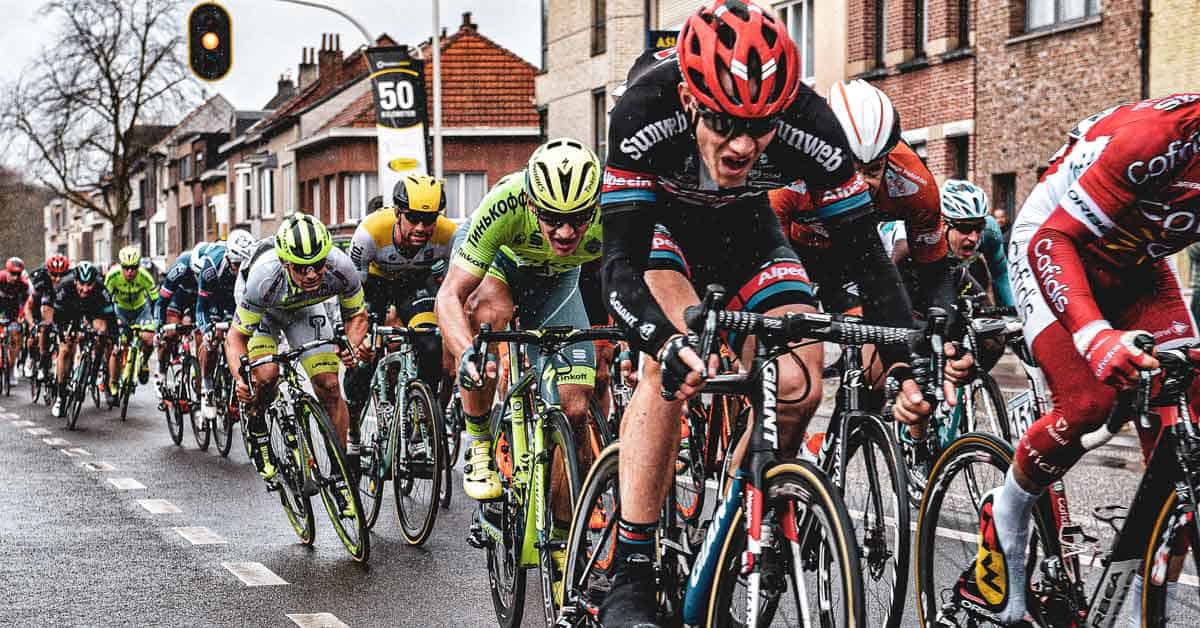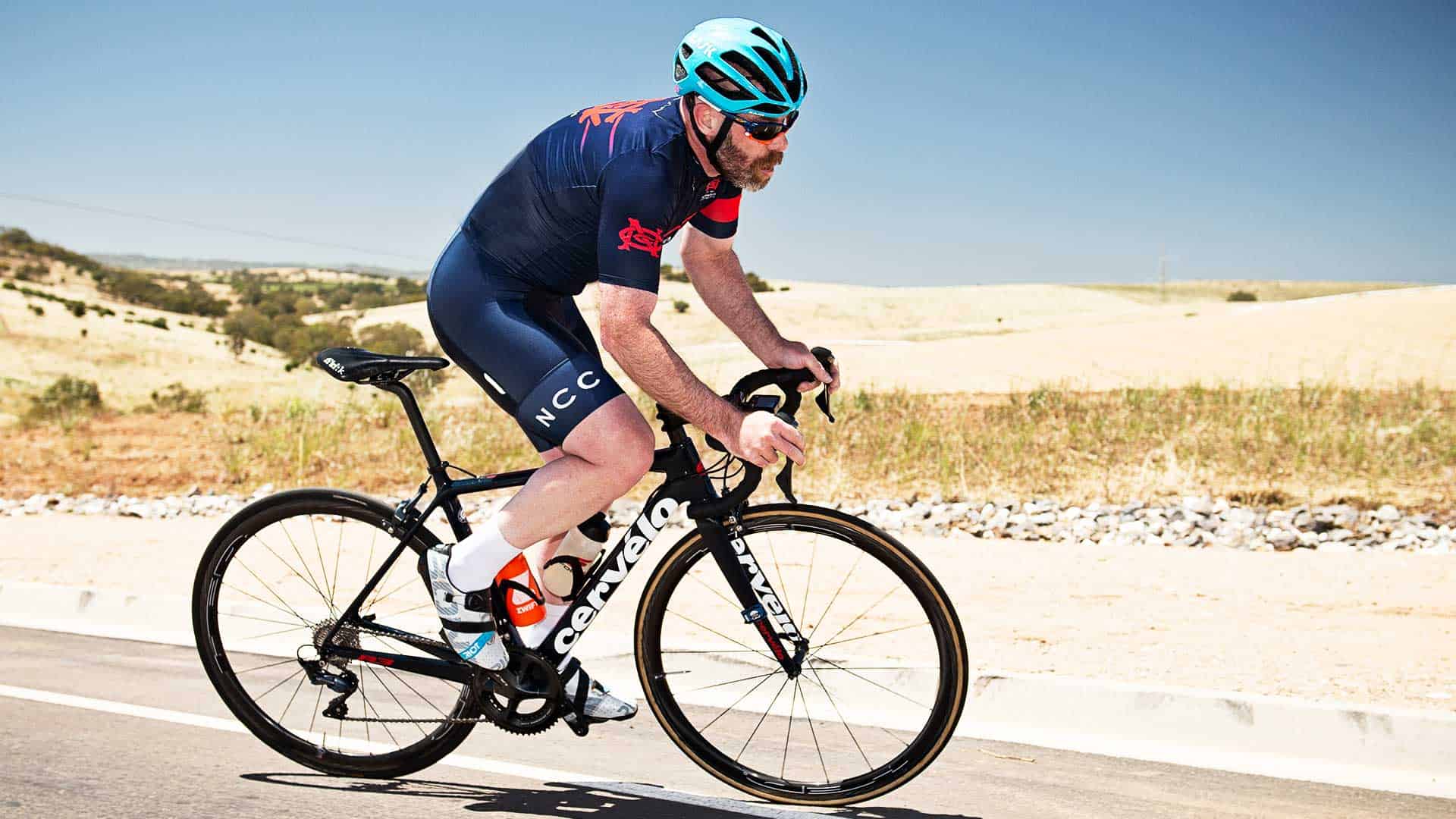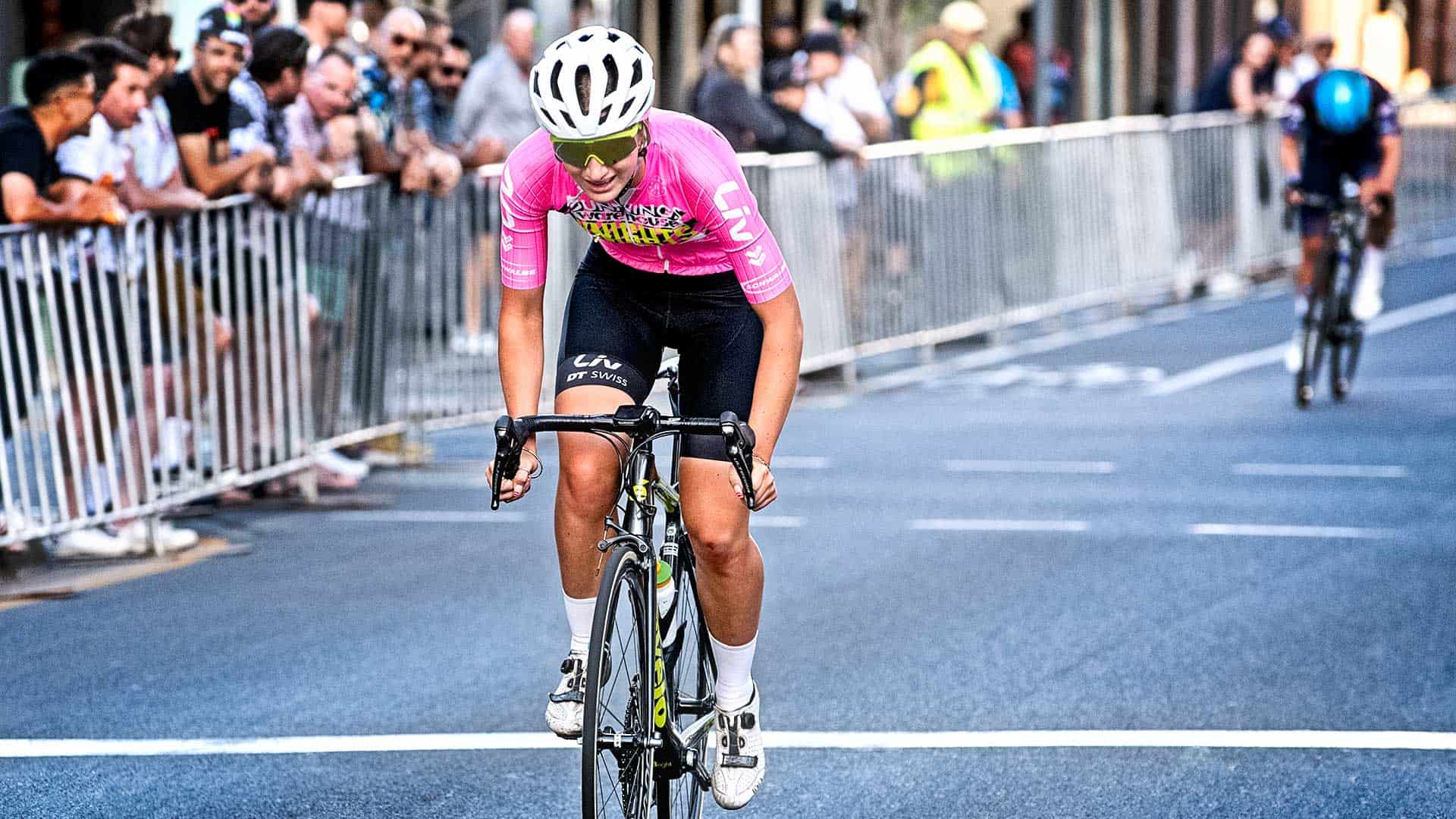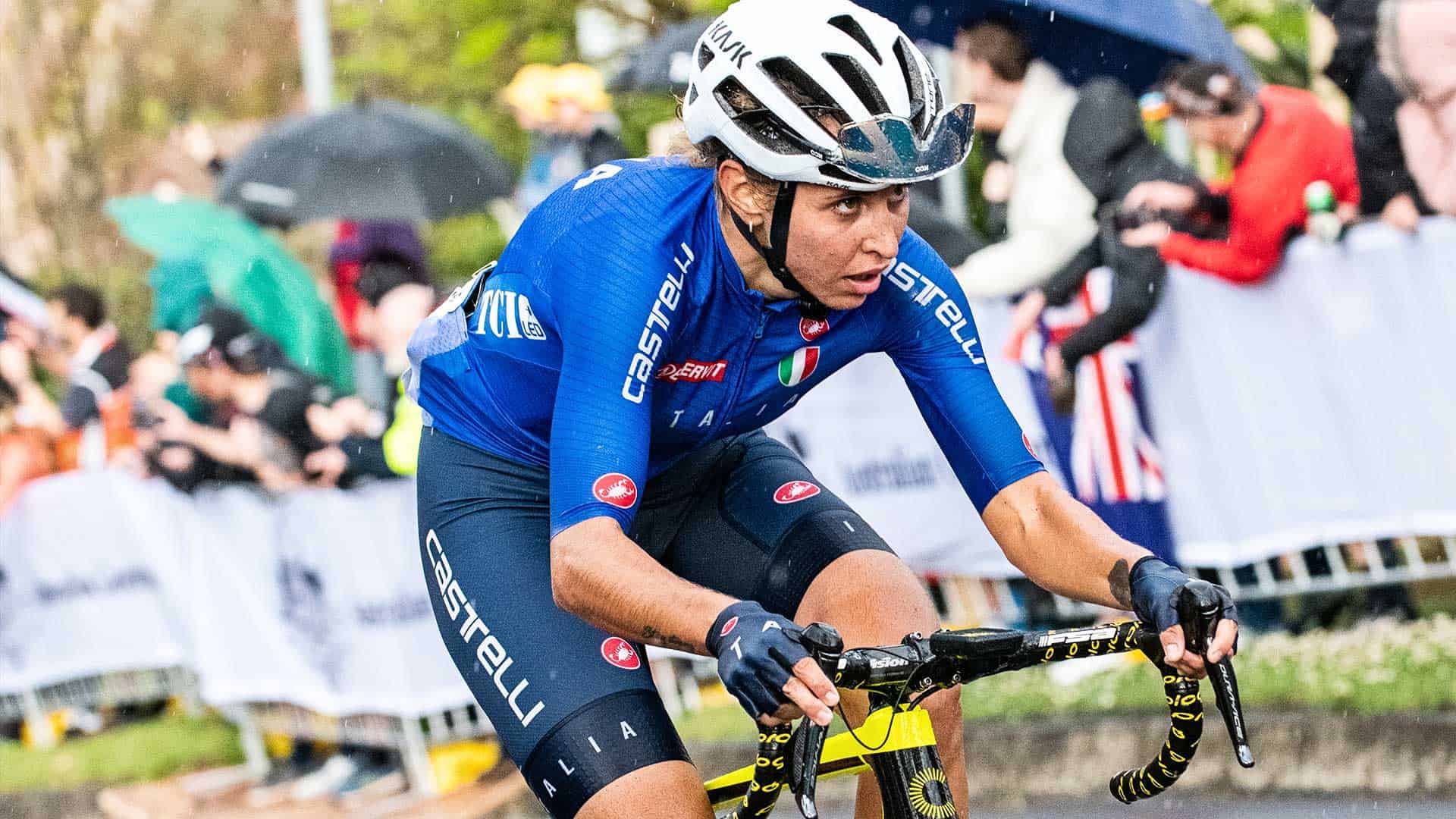Cycling in a group has a number of advantages over riding solo, such as a reduction in energy expended through the use of slipstreaming and having someone to talk to. If you are new to this type of activity, try to find a group that suits your level of fitness.
If you are not confident riding in a bunch, then don’t get caught in the middle of the bunch. To get out of a bunch, where safe to do so move to the left and slow your speed down. You are better off sitting at the back and a safe riding distance away for margin of error. This is about 1-2 bike lengths initially. Also, get used to the surges a bunch has and watch the wheels in front, try not to overlap wheels with the rider in front of you.
Always ride with your head up in a bunch looking forward. This ensures you can see the reactions of the bunch and any changes or hazards. You should not focus on the rear of the wheel of the rider in front. Focus 1-2 riders ahead. By focussing on the riders in front of you, you’ll be more aware of what is happening in the bunch. It won’t take you long to judge the distance between you and the rider in front. Bunch riding is good as you can chat to the person beside you and the km’s pass by quicker. However, always ensure you are looking forward and not facing the person you are talking too.
Bunch formation
Riders should pair off in 2 by 2 formation. You should not sit directly on the wheel of the rider in front or overlap the wheel, try to maintain about a 30cm – 60cm distance off the rear wheel of the rider in front, but you can get closer as you become more experienced while riding with experienced riders that are able to “hold a steady wheel”
Position on the road
Riders have the right (in all states of Australia) to ride 2 abreast and occupy a full lane, however, common sense should apply. If you are on a busy narrow road it may be safer to ride single file.
Riding too close to the gutter also can create problems for riders. You may scrap your pedal on the gutter or if there is movement on the front of the bunch you have little margin for correction if you run out of road. Or, you may ride off the road on roads that have no shoulder.
The lead riders
The two riders on the front have a huge responsibility. They must set the pace, call all road obstacles and warn the bunch of any traffic changes. All road obstacles should be relayed through the bunch via visual and auditory cues.
The tailenders
The riders at the back of the bunch experience surges more than the front of the bunch. Also depending on the size of the bunch, the tailenders may have to wait for traffic changes/signals where the front of the bunch has passed through. Just because the front of the bunch proceeds does not mean that it is safe for the entire bunch to proceed. This also means that the tailenders often have to chase the bunch down. Hopefully, the bunch realises there is a split and takes the pace off until re-grouped.
Pace line and rolling over
The formation is like a chain, where the rolling off the front occurs at speed by the lead rider. The way the rider rolls off is usually dependent upon the direction of the wind. The rider always rolls off to the side the wind is coming from. In the case of a head or tailwind rolling off to the left towards the gutter is generally the best way.
The amount of time the lead riders spend on the front will depend on weather conditions and the strength of the riders. This gives everyone a chance to go to the front. If you feel that you are not fit or strong enough to do a turn, go to the front, advise your partner and have them move in front of you, so they remain at the front and another rider in the other line moves forward. Do not suddenly pull out of the line prior to getting to the front. This only leaves gaps.
The rider rolling off immediately starts soft-pedalling dropping speed. The rider coming through does not pick up speed. Surging through by the lead rider only strings the field out making it hard for those moving back down the line to move back on to the forward-moving line.
Riders in the slower pace line must stay on the wheel. Do not stop pedalling.
Those riders not able or wanting to join the paceline should stay slightly off the back of the line containing the riders coming off the front. You will get good cover here, plus not disrupt the riders in the paceline.
Riding position and techniques
When in a bunch never have your hands on the top of the bars where you can’t reach the brakes. Ride on the hoods or drops where you can touch the brakes.
When in a bunch, movements should be subtle including braking and avoiding obstacles. Riders overreacting or exaggerating avoidance causes a domino effect throughout the bunch and the bunch becomes untidy.
When a bunch gets to a rise there can be ‘roll back’ when a rider gets out of the saddle. This can be a nervous moment for those behind as it causes their bike to slow down dramatically and can create chaos in a tight bunch of riders. When starting a hill climb, try to maintain forward pressure on the pedals as you get out of the saddle, so your speed remains constant.
The only way you can learn the skills of bunch riding is to practice. If you are not sure, stay down the back until you are confident enough to join the bunch. If you are nervous or lacking confidence, consider the safety of the other riders first before joining the bunch.
Where to next
We have produced an online bunch riding video masterclass course that will help you master the fifteen fundamental bunch riding skills. These fifteen modules will help you rapidly get up to speed and give you a better comprehension of the way in which bunch riding works. You can download and keep each of the fifteen modules in this masterclass. I’m certain that you will get a great deal out of this online video masterclass course and be riding in bunches with more safety and with greater certainty. Click here to check it out.
Other items of interest
Pacelines, overlapping wheels and aerobars, what could possibly go wrong…
The fifteen essential bunch riding skills to help you keep safe and ride with greater confidence
How to become a powerful bunch rider
Safe bunch riding skills – How to overtake a cycling bunch safely









Leave A Comment